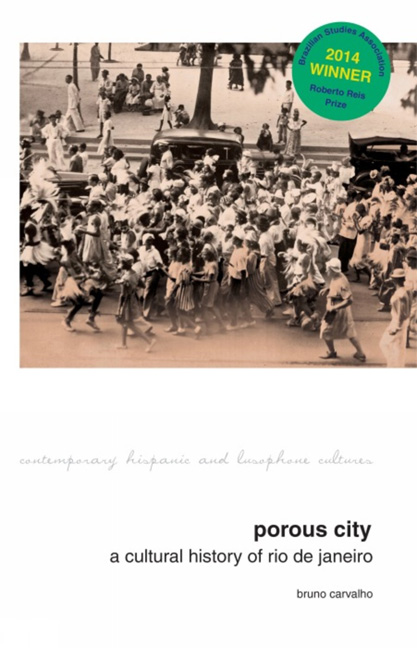Book contents
- Frontmatter
- Contents
- List of Maps
- List of Figures
- A Note on Translation
- Preface
- Introduction: In Search of Things Past: Mapping Rio
- 1 At the Centre of an Imperial Capital: Swamps, Yellow Fever, and Gypsy Parties
- 2 A Master on the Periphery of a Periphery: Popular Music, Streetcars, and the Republic
- 3 Beyond the Belle Époque: On the Border of a ‘Divided City’
- 4 Afro-Jewish Quarter and Modernist Landmark
- 5 Writing the ‘Cradle of Samba’: Race, Radio, and the Price of Progress
- 6 ‘It's (Mostly) All True’: The Death of a Neighbourhood and the Life of Myths
- Conclusion: The Future Revisited: Where Has the Past Gone and Where Will it Go?
- Acknowledgements
- Works Cited
- Index
1 - At the Centre of an Imperial Capital: Swamps, Yellow Fever, and Gypsy Parties
- Frontmatter
- Contents
- List of Maps
- List of Figures
- A Note on Translation
- Preface
- Introduction: In Search of Things Past: Mapping Rio
- 1 At the Centre of an Imperial Capital: Swamps, Yellow Fever, and Gypsy Parties
- 2 A Master on the Periphery of a Periphery: Popular Music, Streetcars, and the Republic
- 3 Beyond the Belle Époque: On the Border of a ‘Divided City’
- 4 Afro-Jewish Quarter and Modernist Landmark
- 5 Writing the ‘Cradle of Samba’: Race, Radio, and the Price of Progress
- 6 ‘It's (Mostly) All True’: The Death of a Neighbourhood and the Life of Myths
- Conclusion: The Future Revisited: Where Has the Past Gone and Where Will it Go?
- Acknowledgements
- Works Cited
- Index
Summary
He who knows one of the cities, will know them all, so exactly alike are they, except where the nature of the grounds prevents.
Thomas More, UtopiaBy 1808, when the Portuguese court arrived in Rio de Janeiro after fleeing Napoleon's troops, it was a port city of 40,000 to 50,000 inhabitants and the major trading centre of a predominantly rural country. The colony's capital since only 1763, Rio de Janeiro was unprepared to become capital of the United Kingdom of Portugal, Brazil, and the Algarves, a title obtained in 1815. Besides the Royal family, the newly acquired status brought key changes: opening of the ports for trade with foreign markets, the establishment of Brazil's first bank and printing press, as well as the creation of institutions like a Royal Library, Botanic Garden, and Academy of Fine Arts. The only American city ever to serve as the seat of Metropolitan power, Rio would undergo rapid growth during the period following the court's arrival. In twelve years alone, the population just about doubled to around eighty thousand.
The colonial capital made perfect sense as a port city. Located in a naturally protected and calm bay, it connected inland through routes that led to the gold-mining interior regions of Minas Gerais. The British merchant John Luccock, who lived in Rio from 1808 until 1818, remarks that ‘when the court first arrived […] the city was circumscribed within very narrow boundaries’ (Luccock 1820: 38). It was surrounded by the ocean to the north-east and east, swamps to the west and north-west, and several hills elsewhere. Although they made the capital notoriously easy to fortify, these natural boundaries also constrained its ability to expand – and Rio remains to this day a city in many ways shaped by geographical peculiarities.
Dom João VI, the Portuguese regent, had little alternative but to mandate city growth towards the swamps of São Diogo. By a royal decree in 1811, tax incentives were granted to those who built on the swampy terrains, which were gradually land-filled. One-storey houses were not allowed, and exemptions were greater for sobrados – larger houses with more than five doors or windows in their facades. Some of these buildings would become the infamous and overcrowded tenements of later decades.
- Type
- Chapter
- Information
- Porous CityA Cultural History of Rio de Janeiro (from the 1810s Onward), pp. 16 - 44Publisher: Liverpool University PressPrint publication year: 2013



